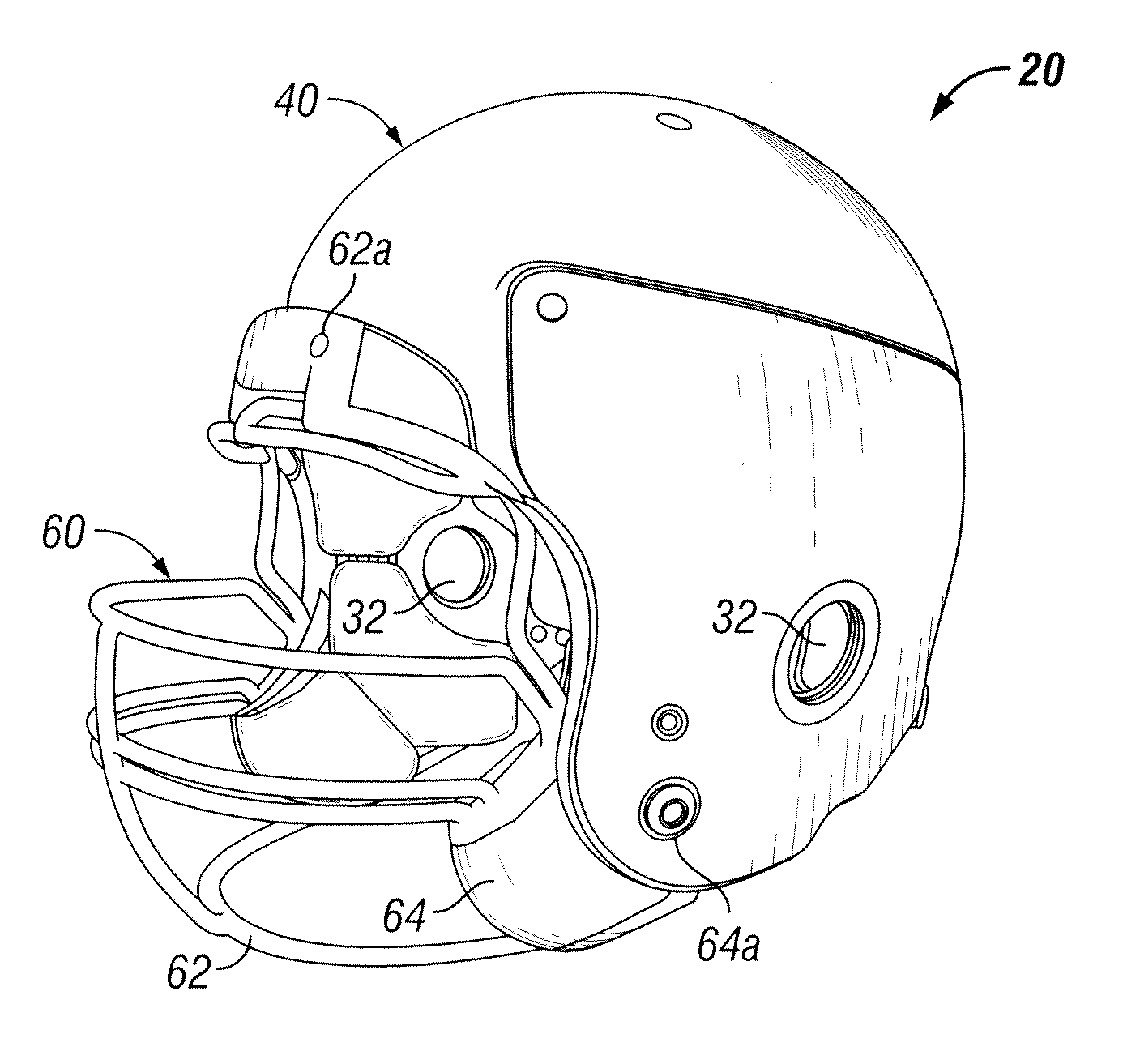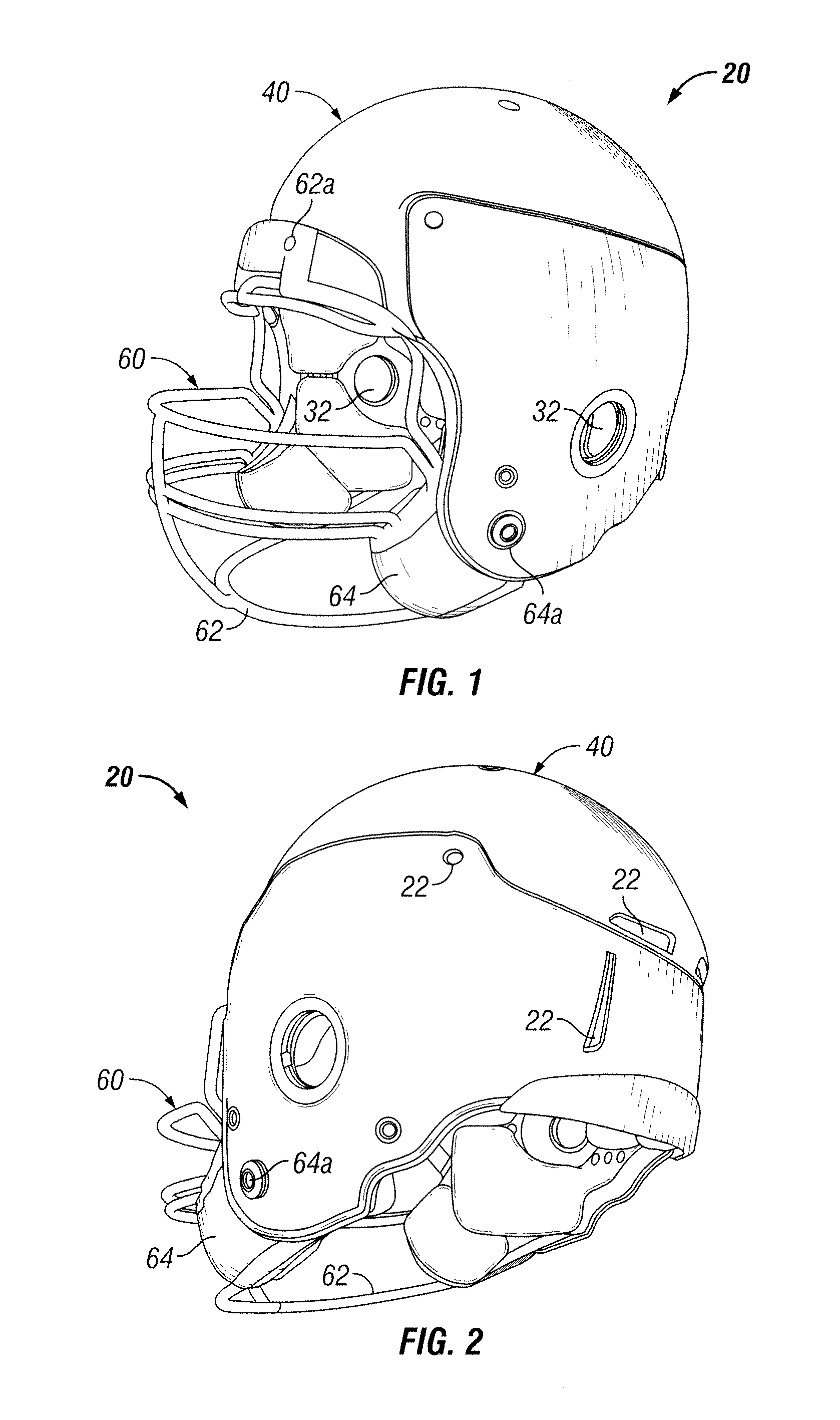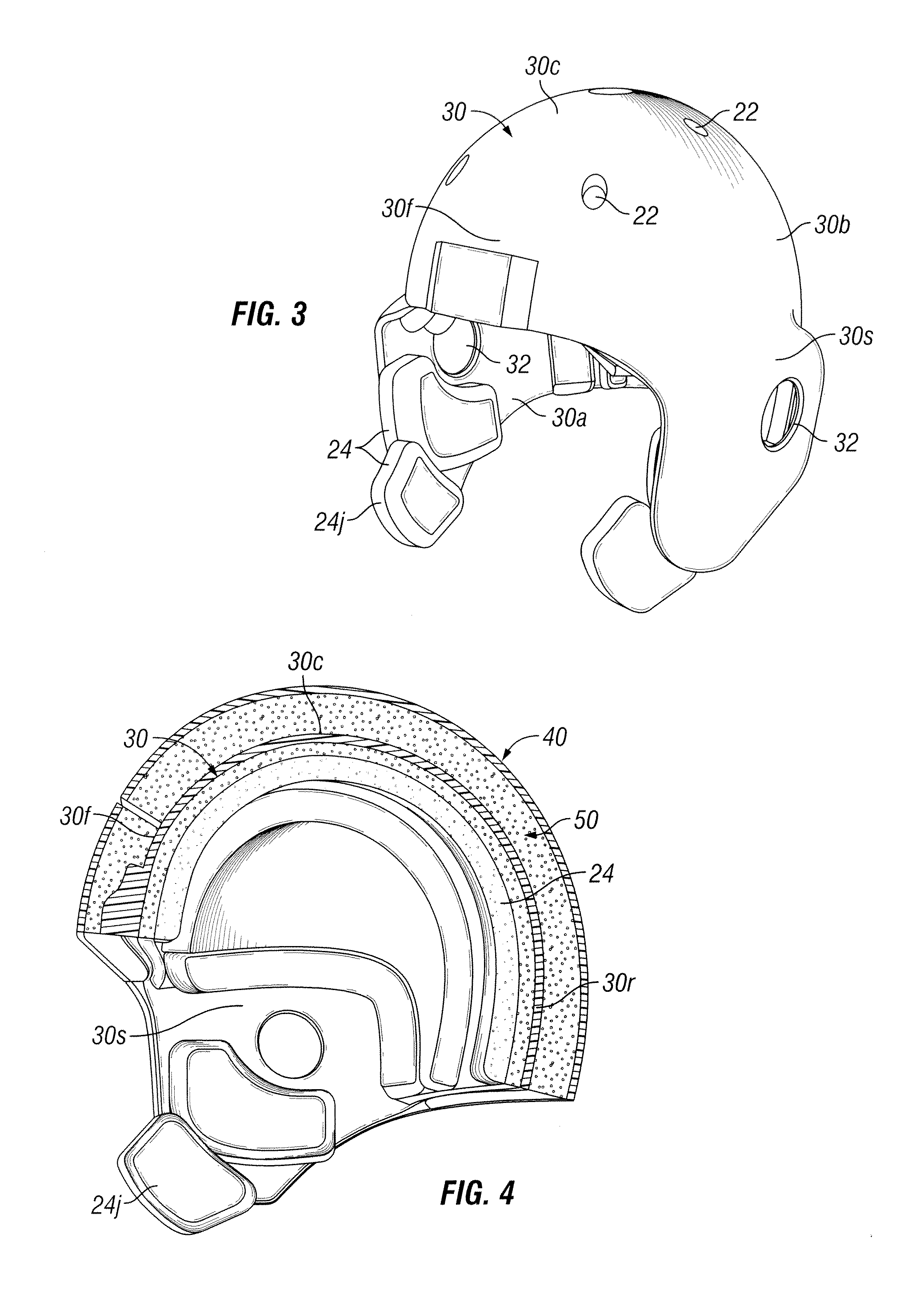Protective helmet
a protective helmet and helmet cover technology, applied in the field of protective helmets, can solve the problems of increasing head force, increasing head force, and increasing padding, and causing large head injuries, etc., to reduce g-forces and reduce g-forces.
- Summary
- Abstract
- Description
- Claims
- Application Information
AI Technical Summary
Benefits of technology
Problems solved by technology
Method used
Image
Examples
Embodiment Construction
[0032]Referring now to the drawings, in which like reference numerals are used to refer to identical or similar elements, a first preferred embodiment of the protective helmet, generally referred to as reference numeral 20, is shown in FIGS. 1-6. The helmet 20 has an inner shell 30 and an outer shell assembly 40. The inner shell 30 is preferably a single, rigid shell having an inner surface 30a and an outer surface 30b. One or more layers of internal padding or pads 24 are attached, connected or fastened to the inner shell 30 to provide impact absorption. An external energy absorbing layer 50 is positioned between at least a portion of the outer surface 30b of the inner shell 22 and the outer shell assembly 40. The protective helmet 20 is designed to dampen the energy of a jarring impact to the outer shell assembly 40 before reaching the hard inner shell 30 by reducing the g-forces. Although the embodiments of the protective helmet illustrated in the figures are football helmets, it...
PUM
 Login to View More
Login to View More Abstract
Description
Claims
Application Information
 Login to View More
Login to View More - R&D
- Intellectual Property
- Life Sciences
- Materials
- Tech Scout
- Unparalleled Data Quality
- Higher Quality Content
- 60% Fewer Hallucinations
Browse by: Latest US Patents, China's latest patents, Technical Efficacy Thesaurus, Application Domain, Technology Topic, Popular Technical Reports.
© 2025 PatSnap. All rights reserved.Legal|Privacy policy|Modern Slavery Act Transparency Statement|Sitemap|About US| Contact US: help@patsnap.com



